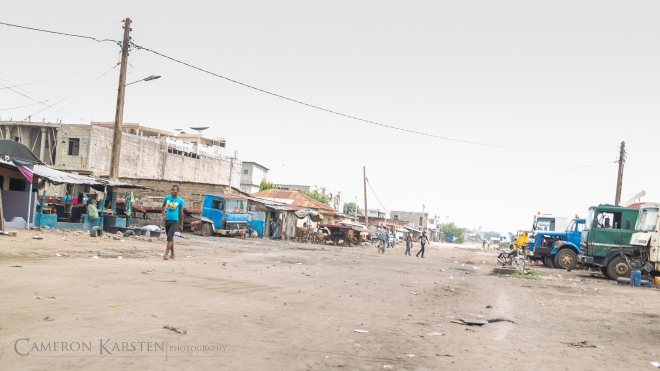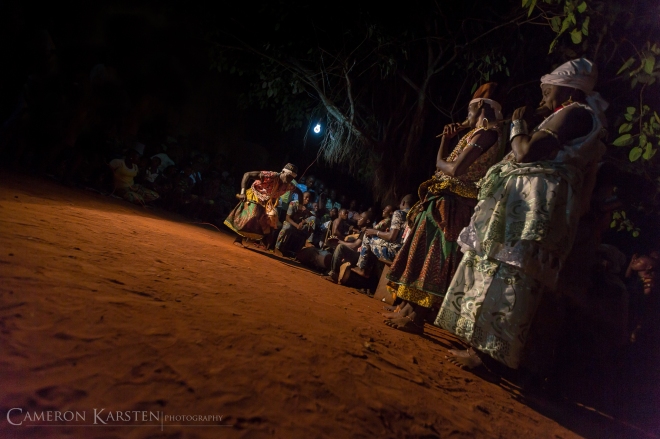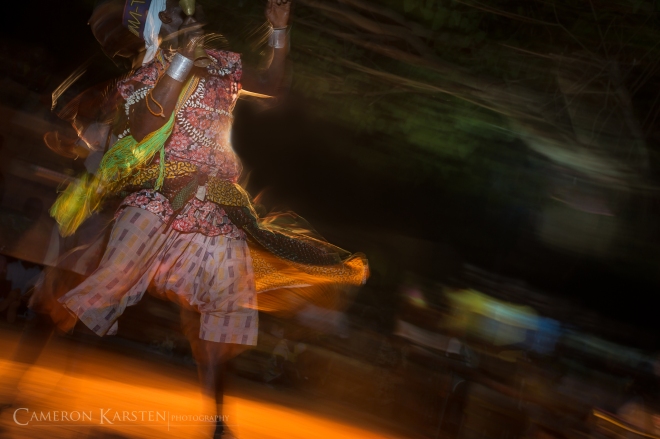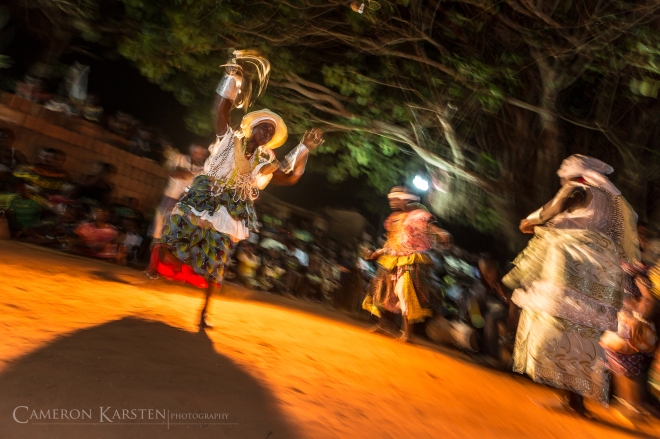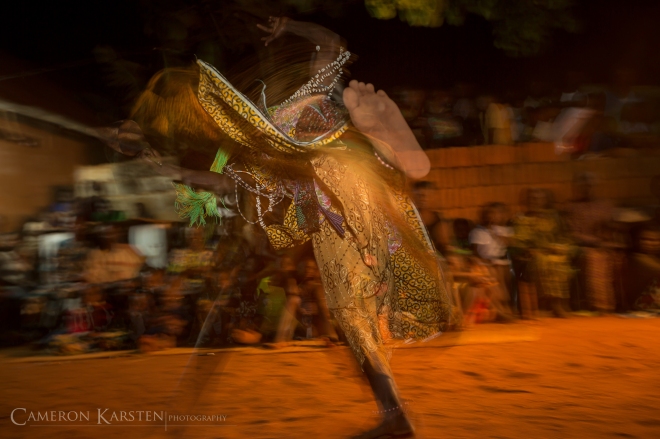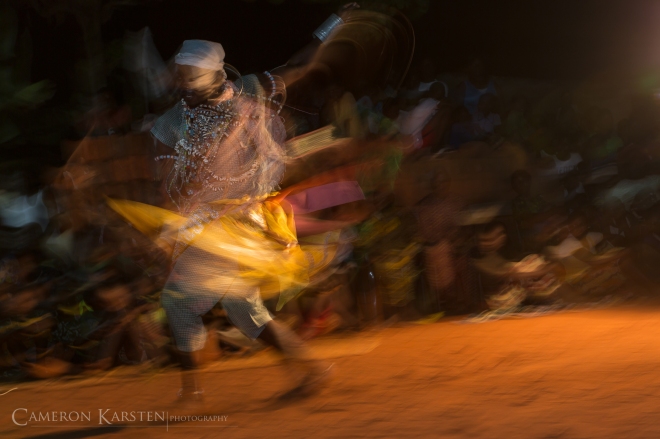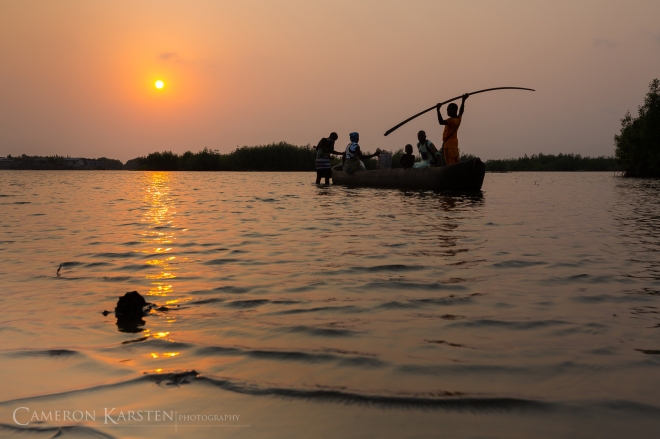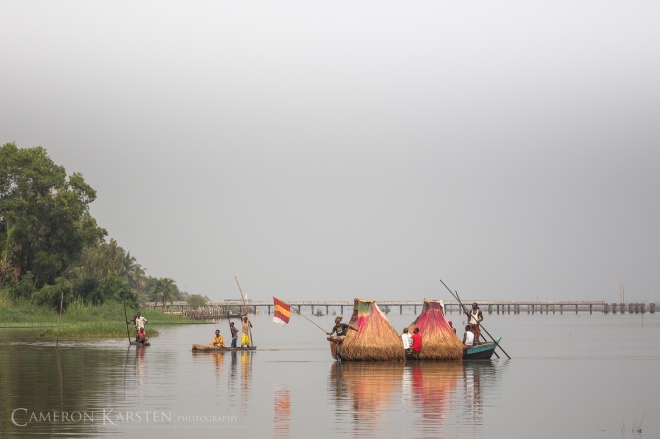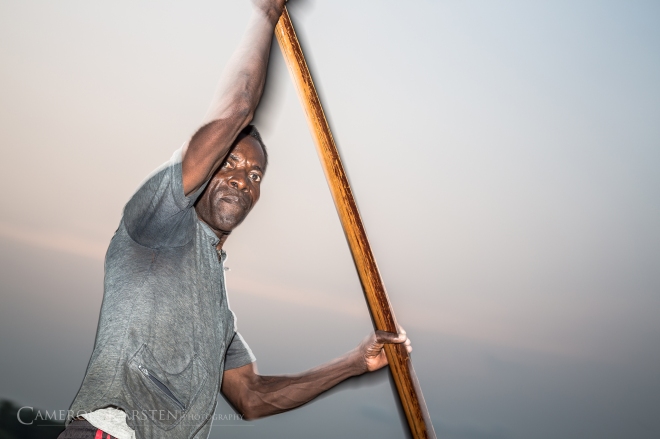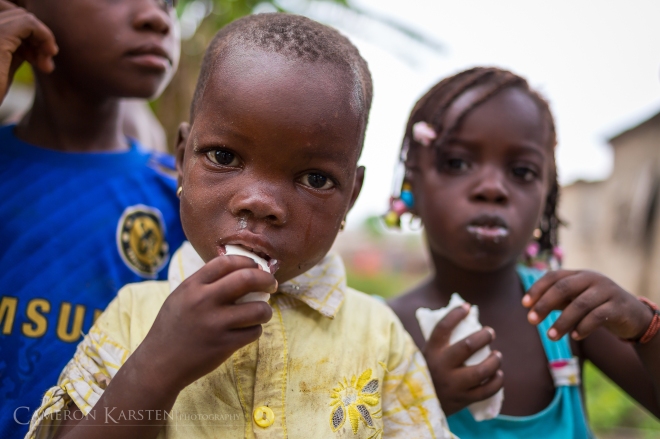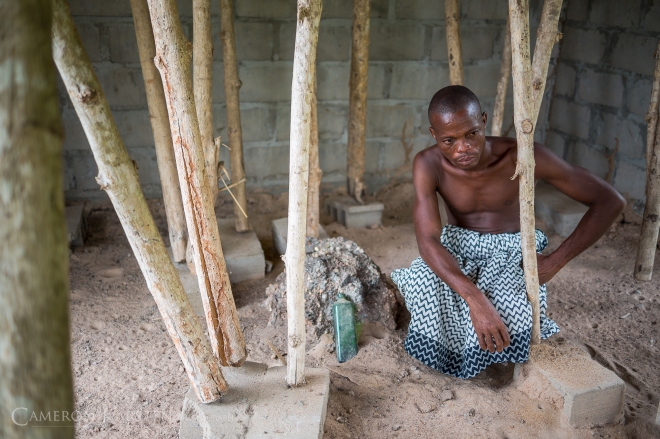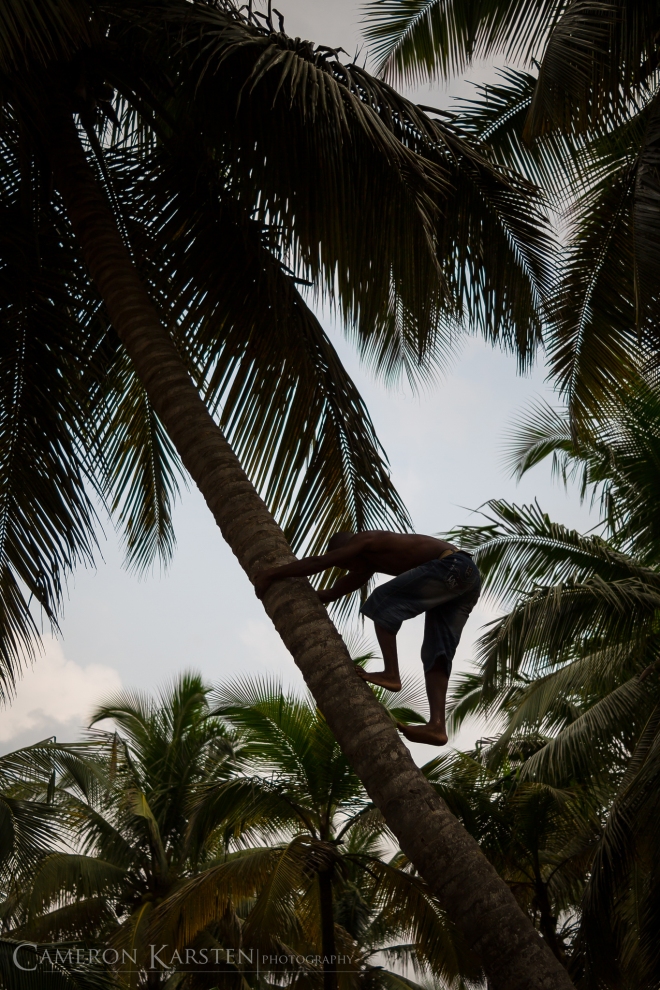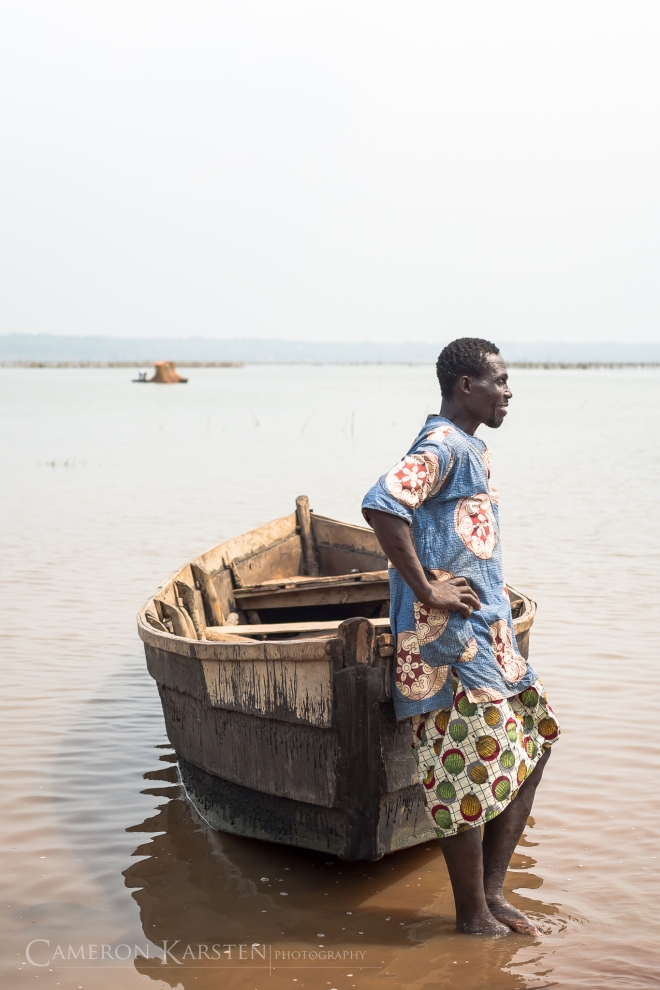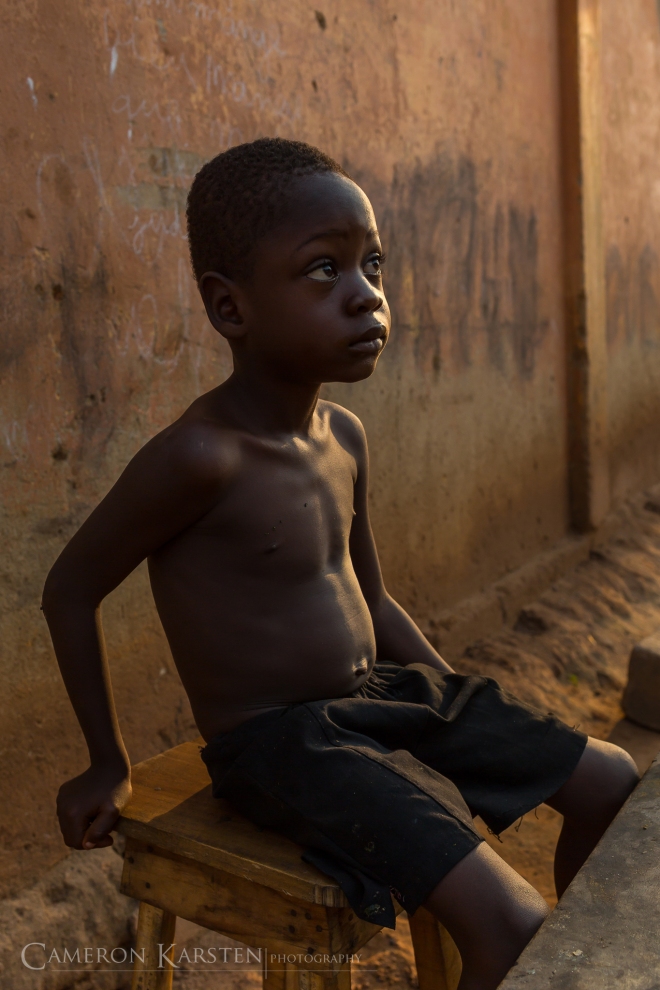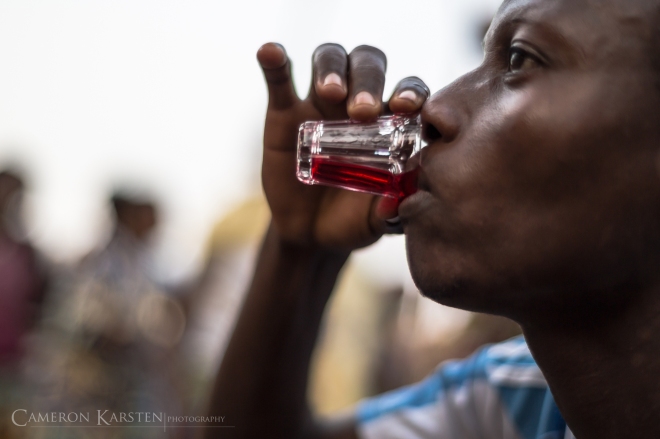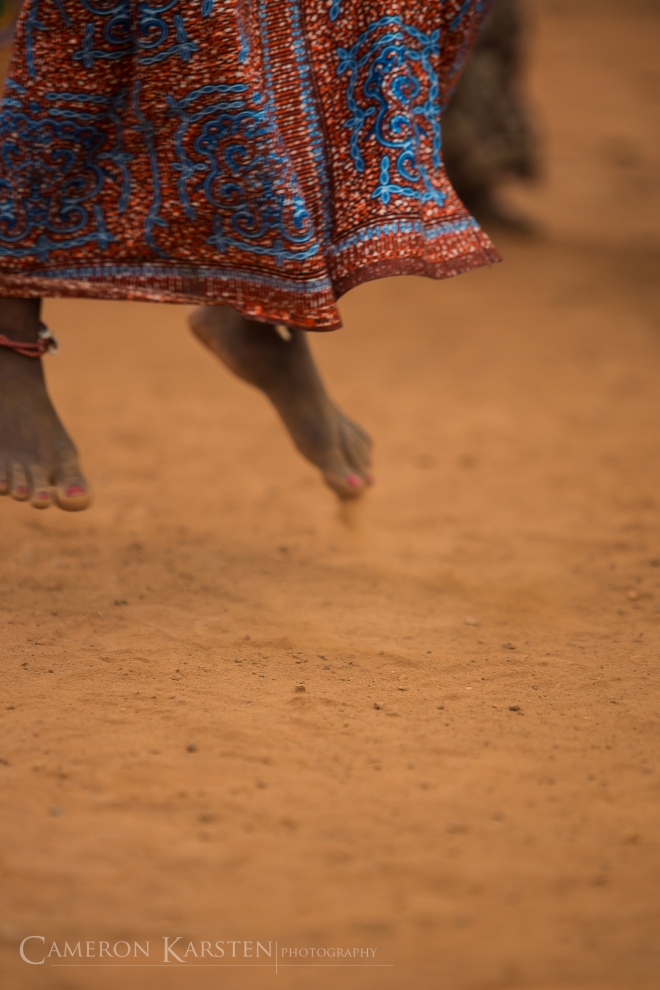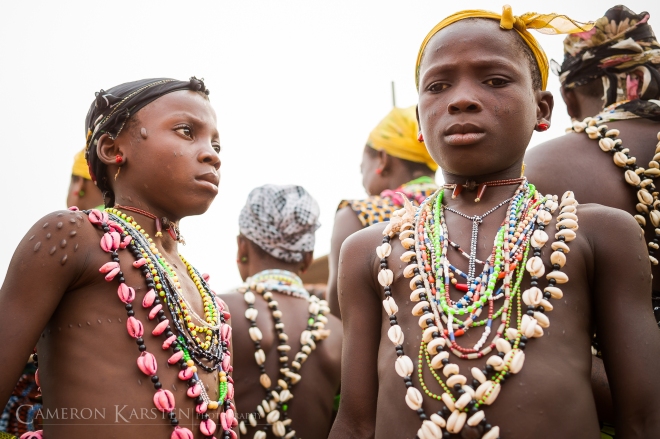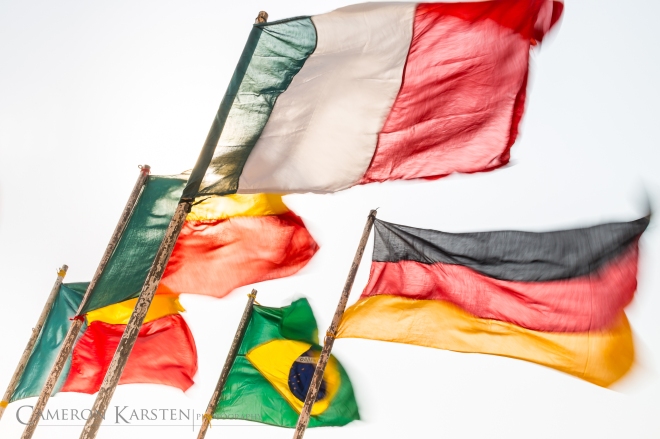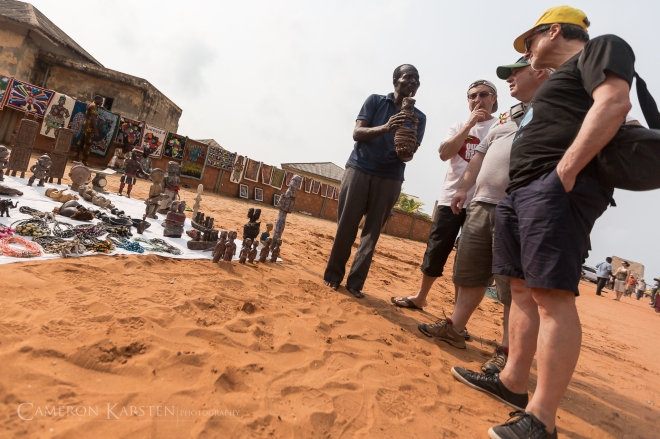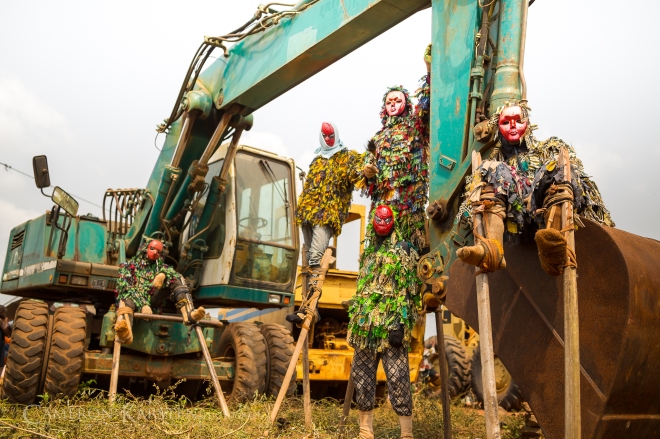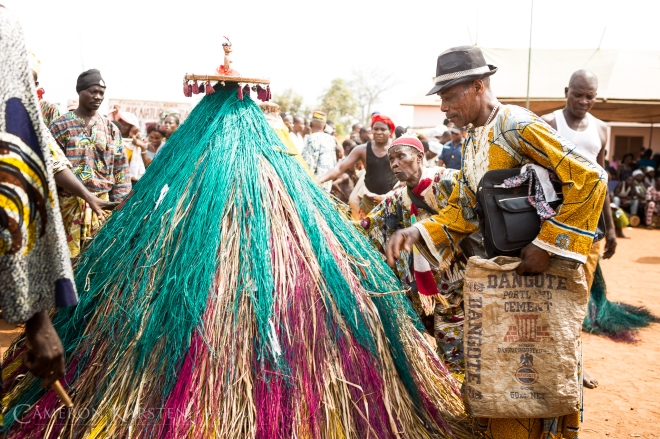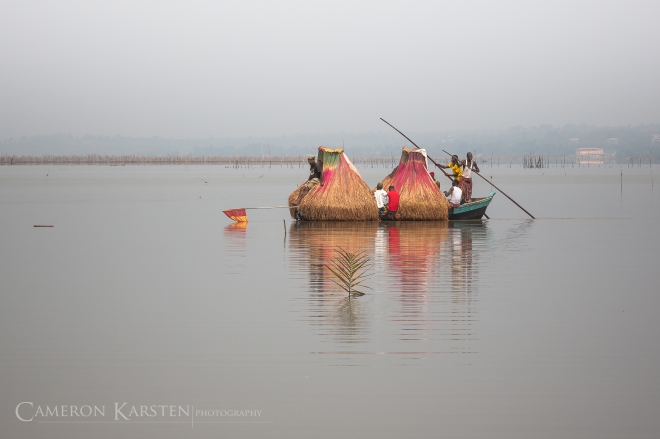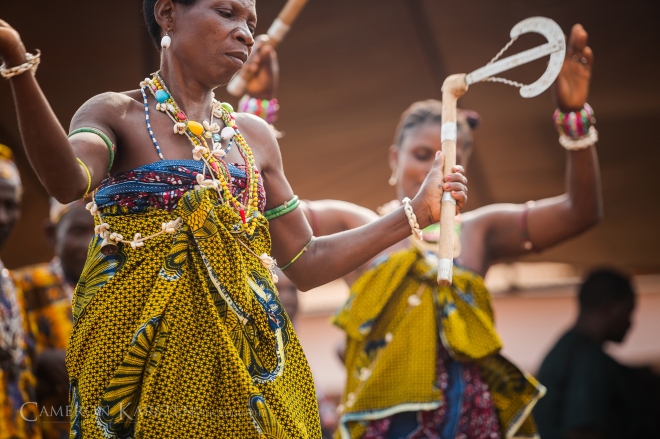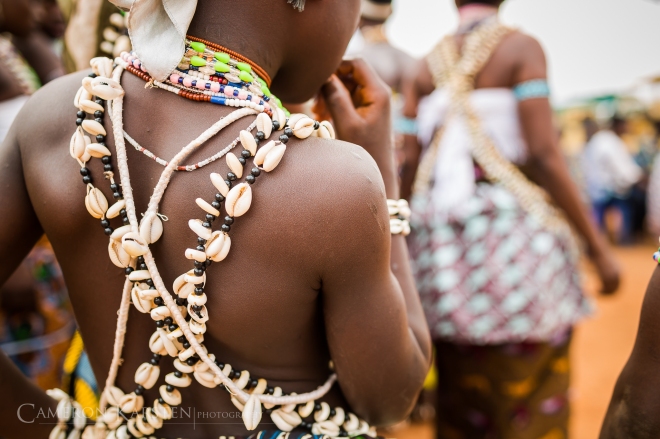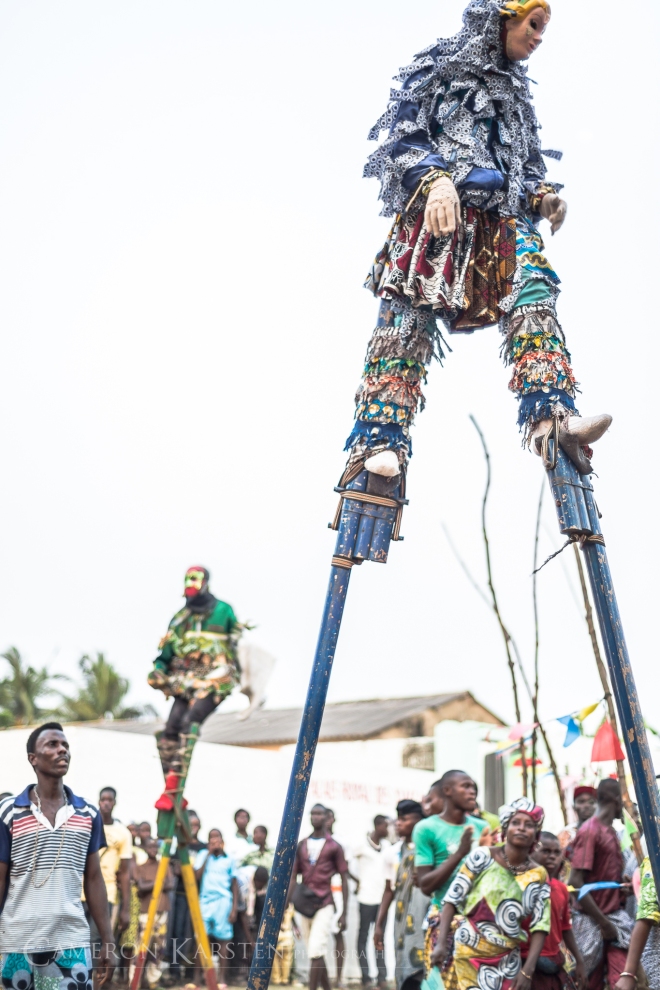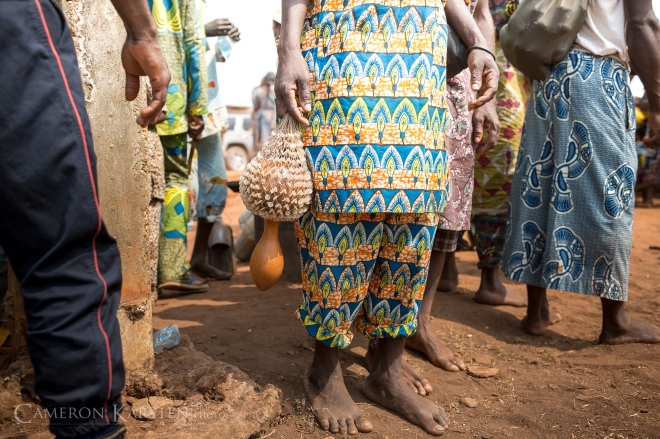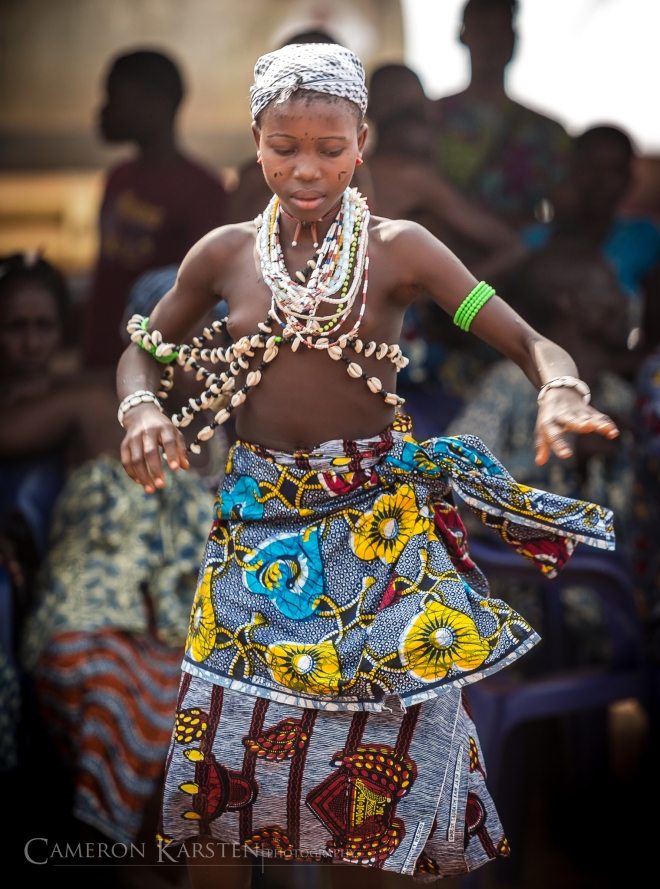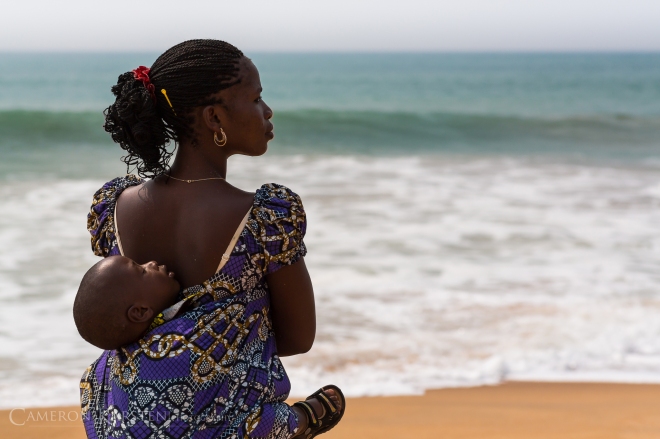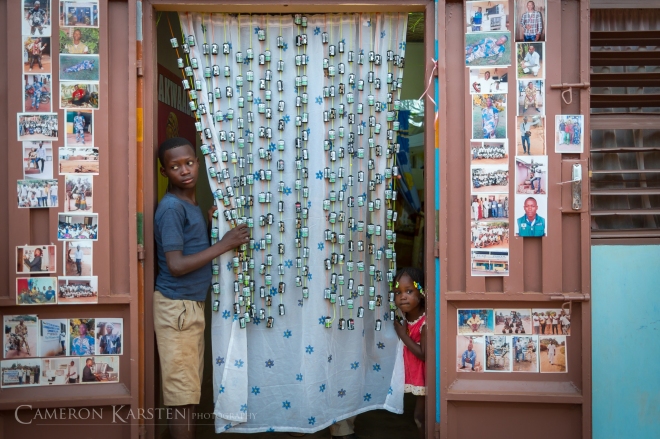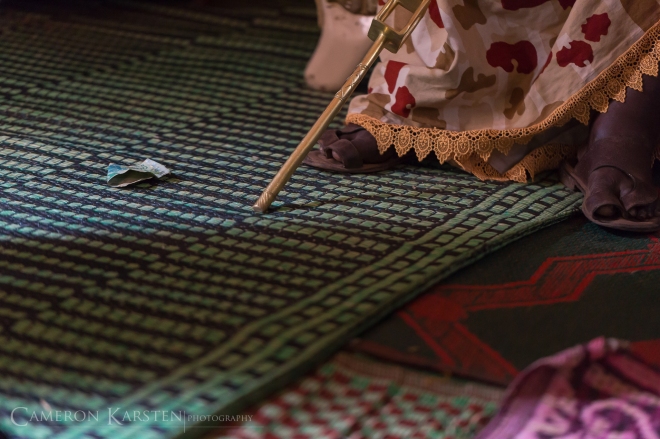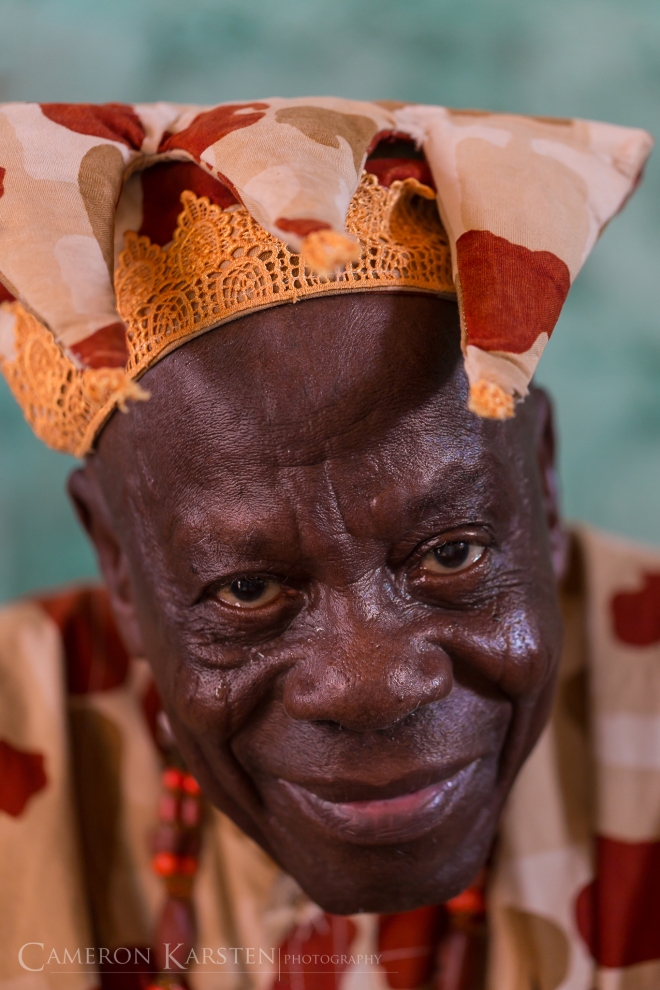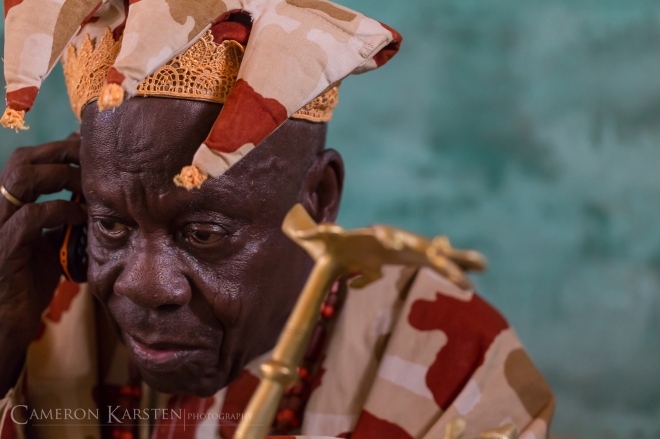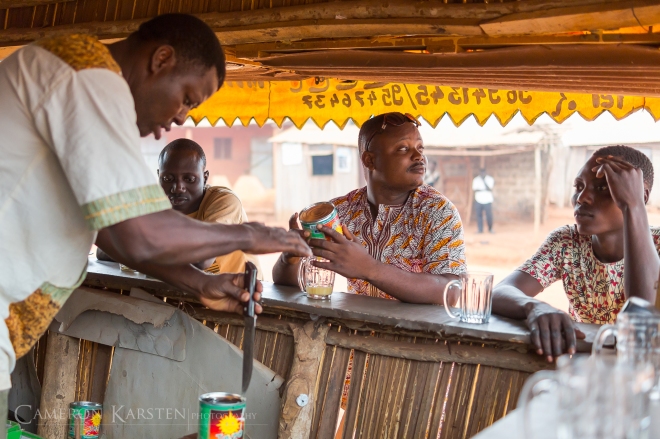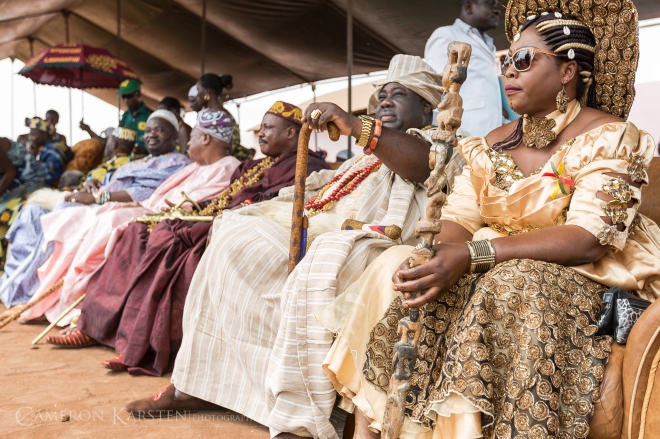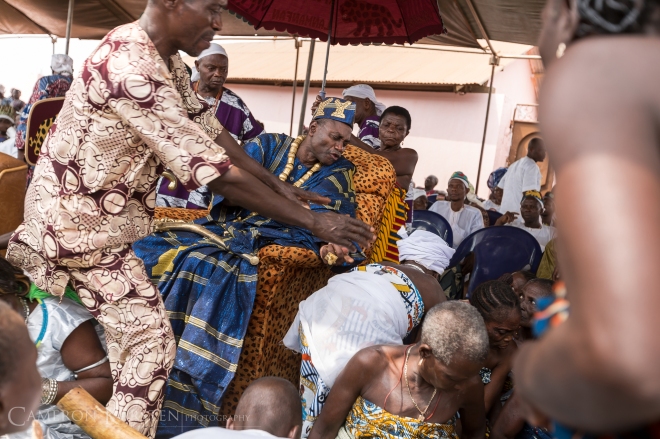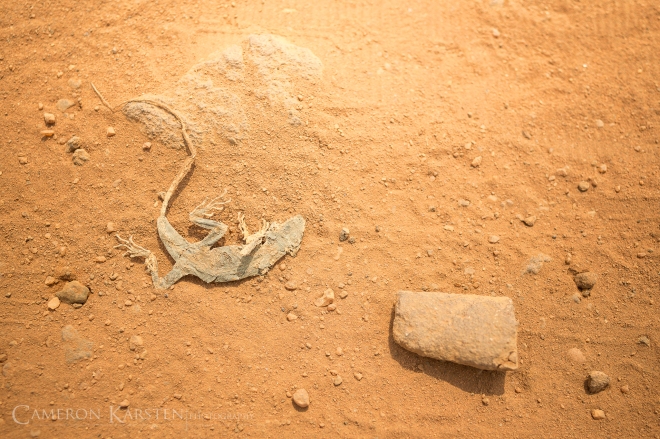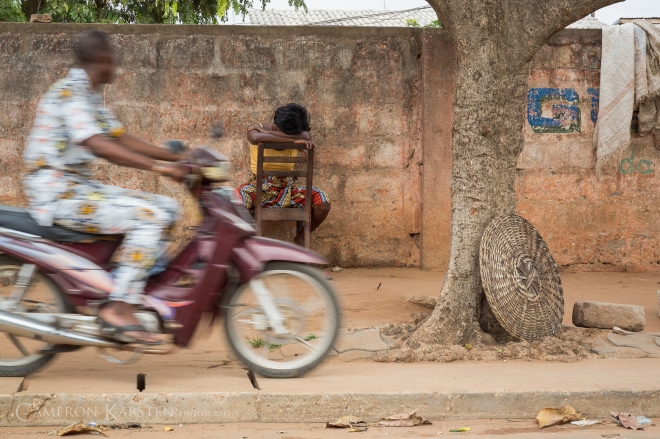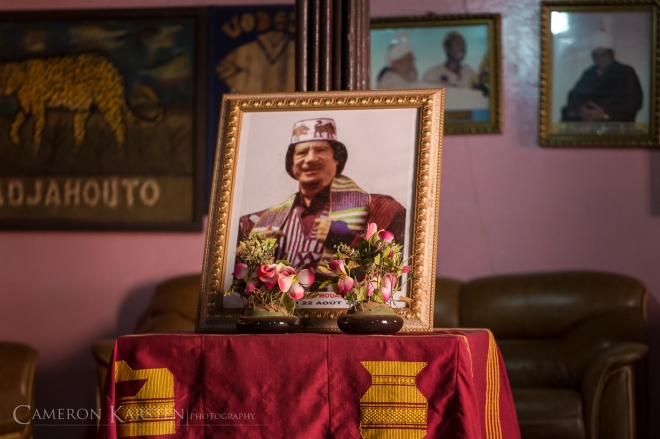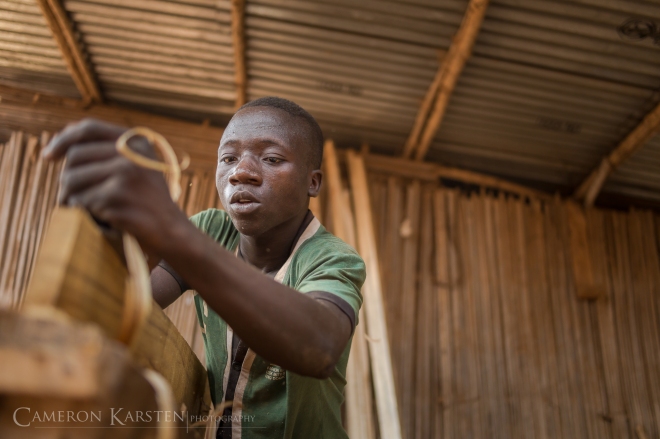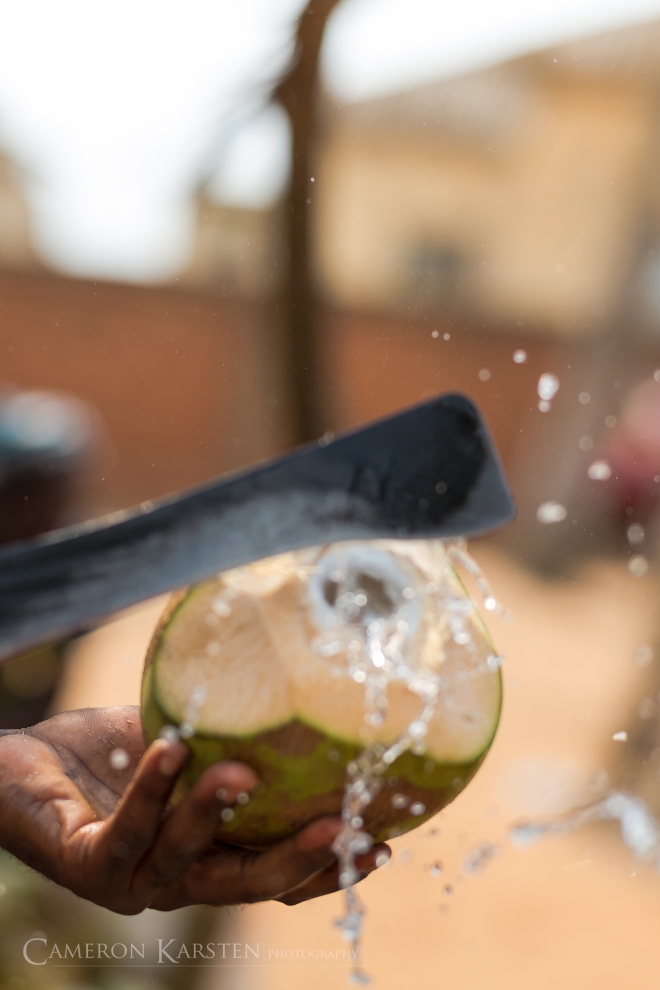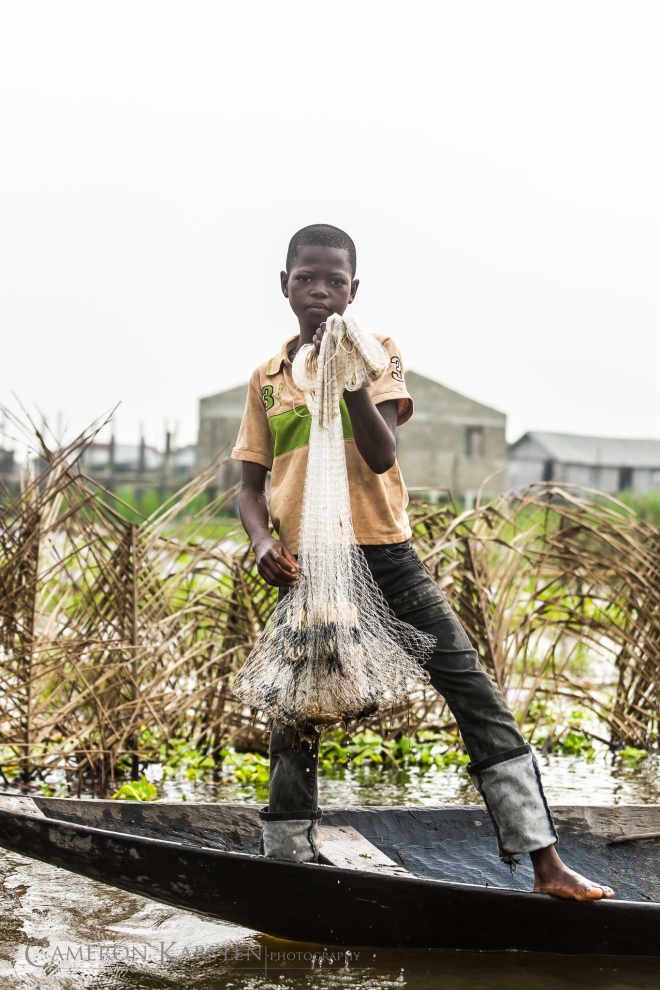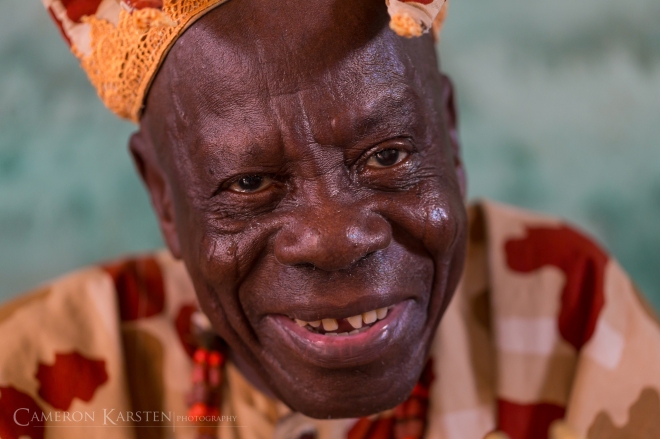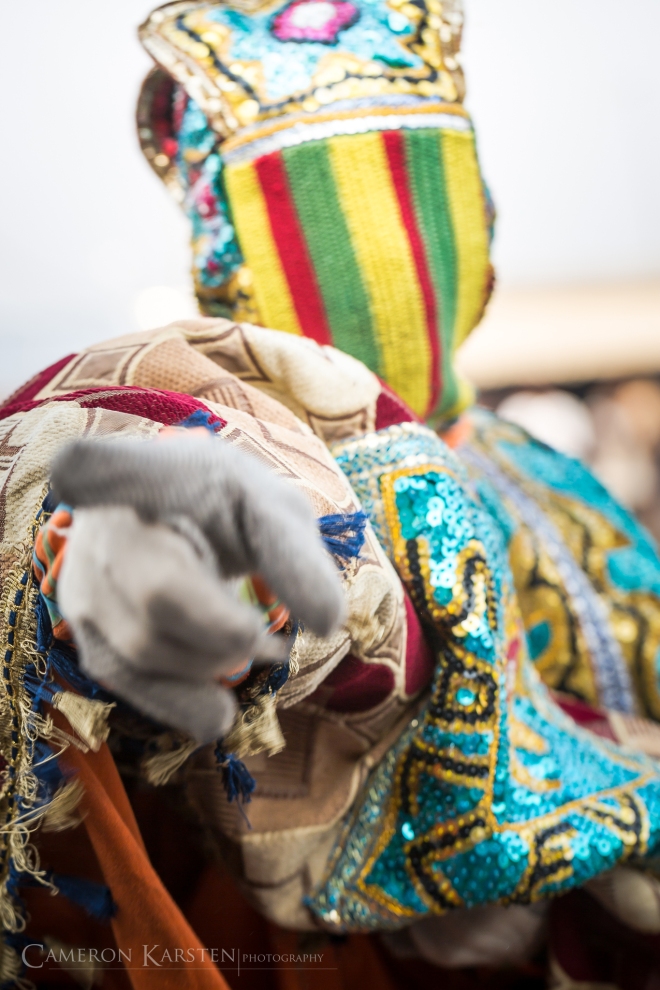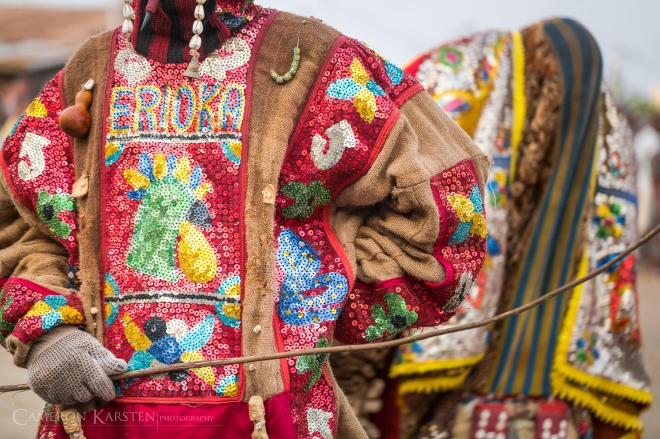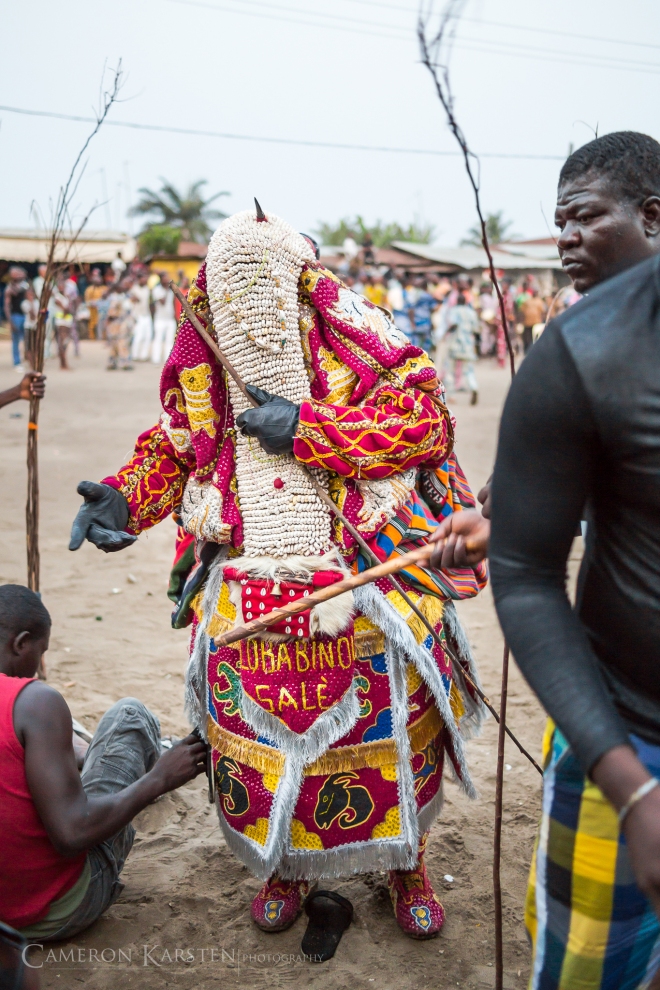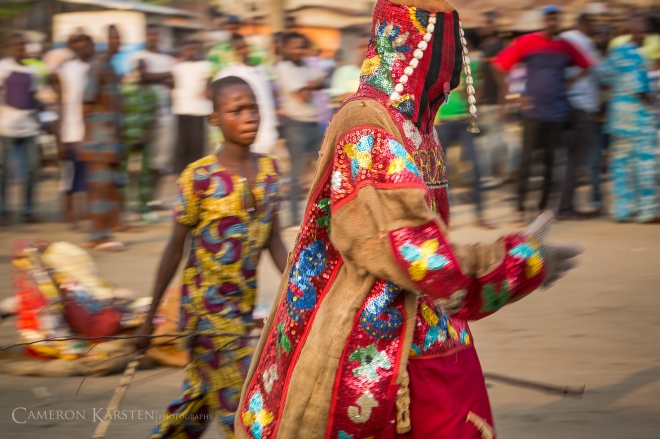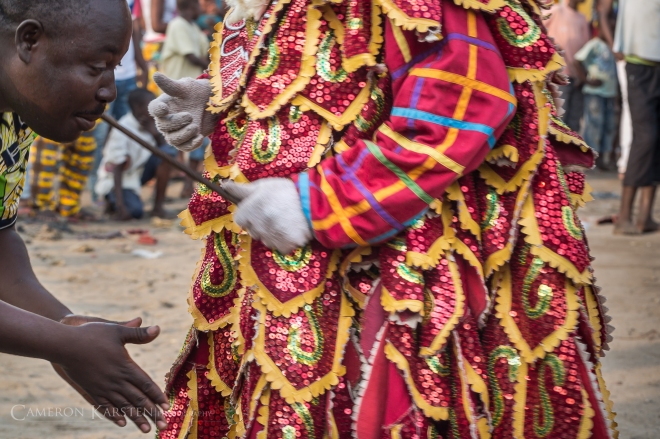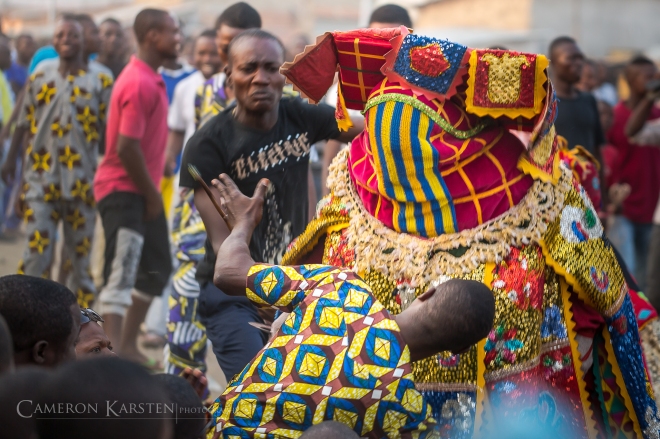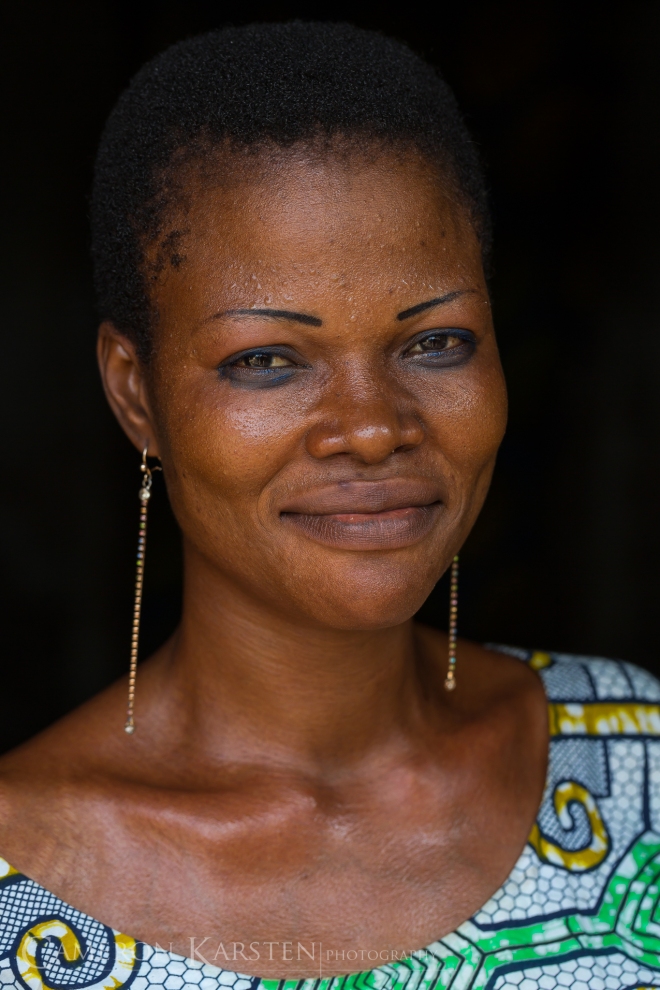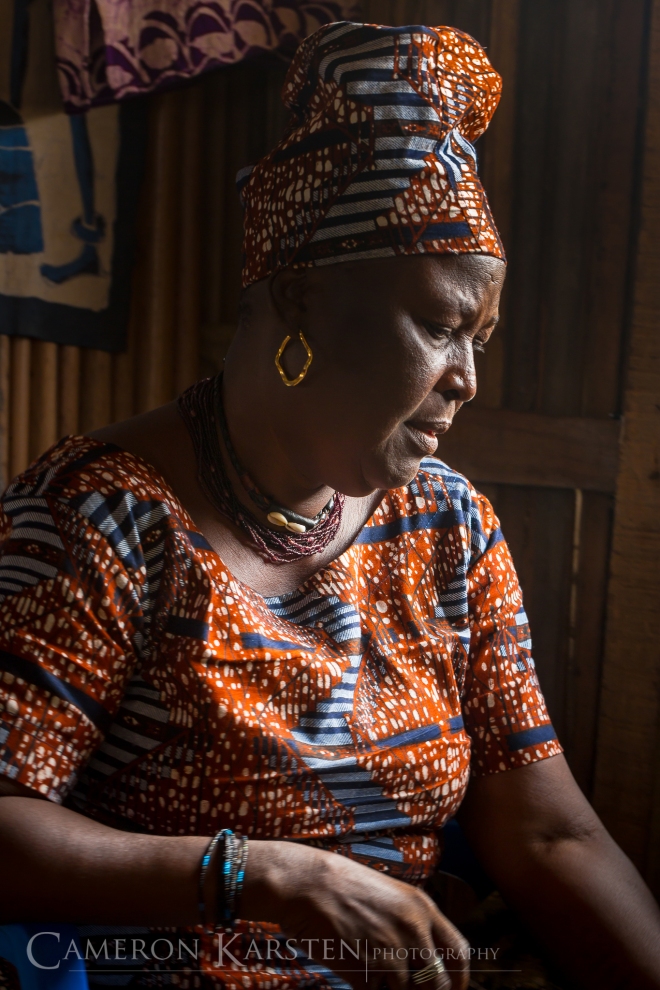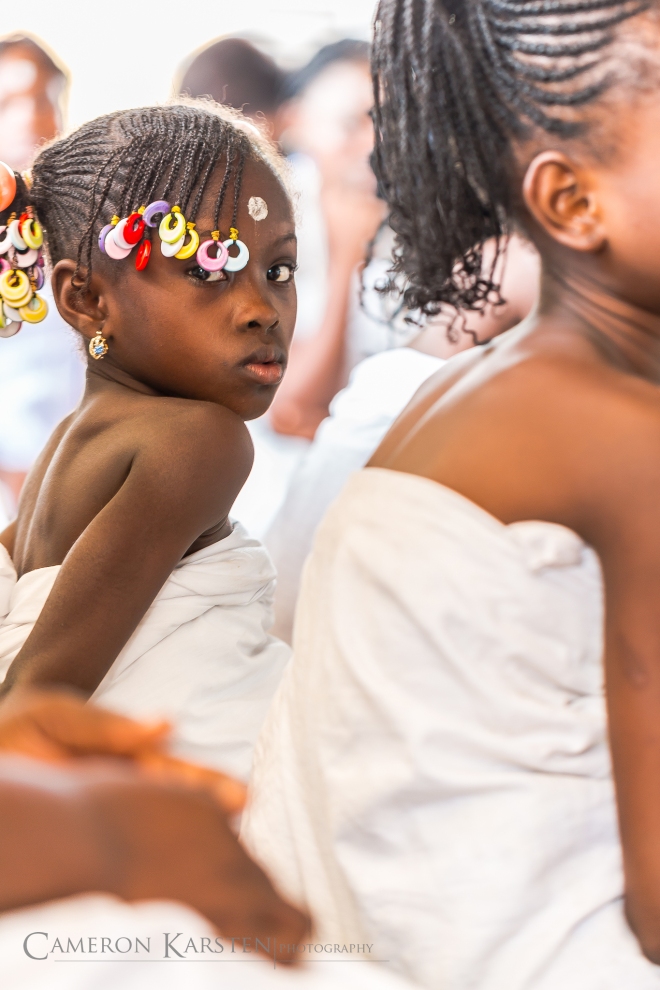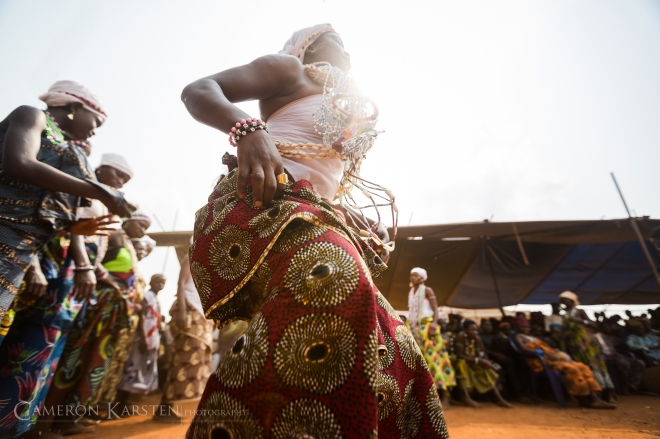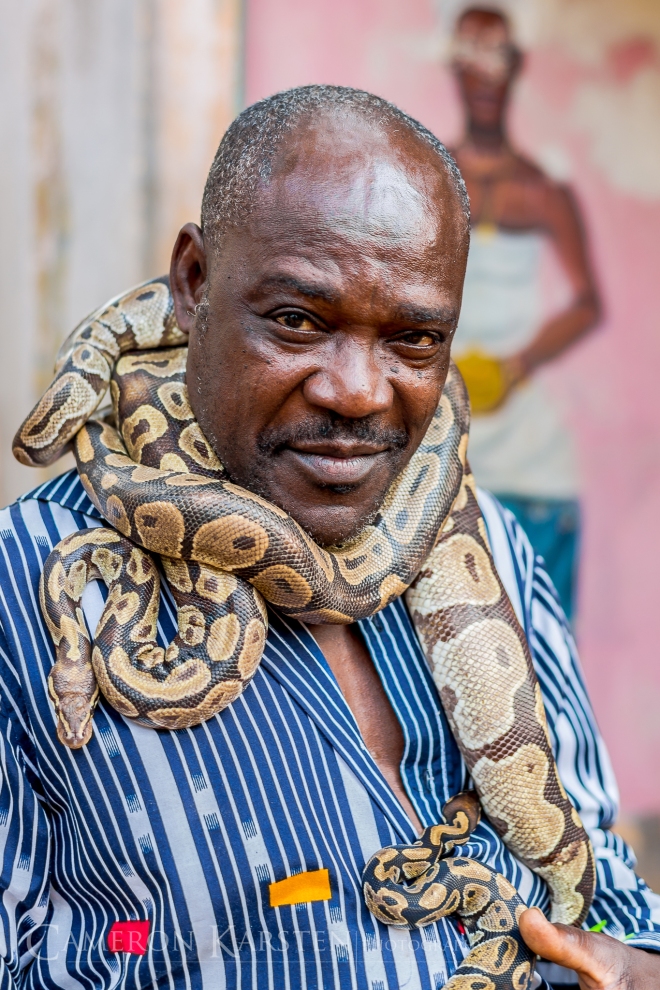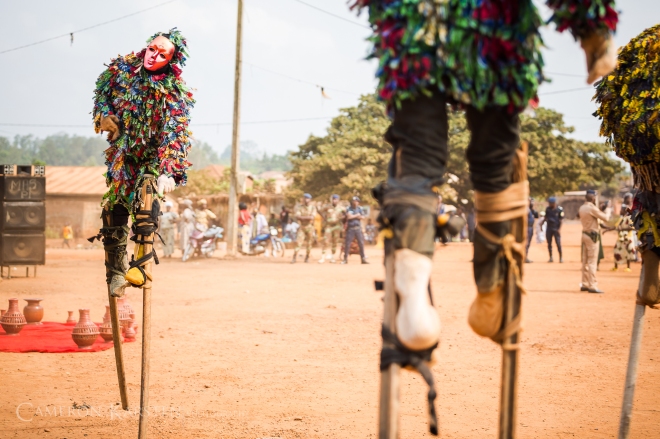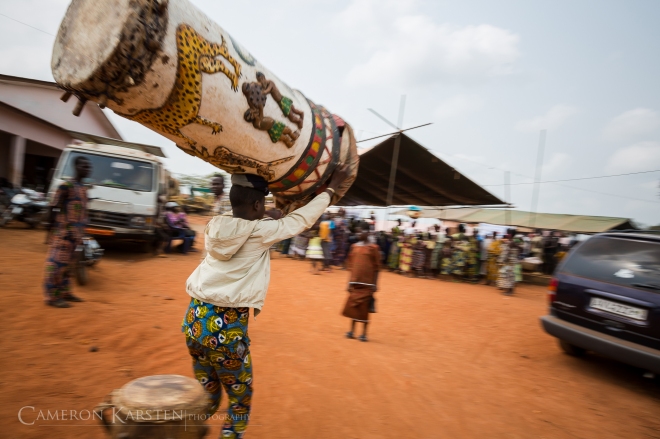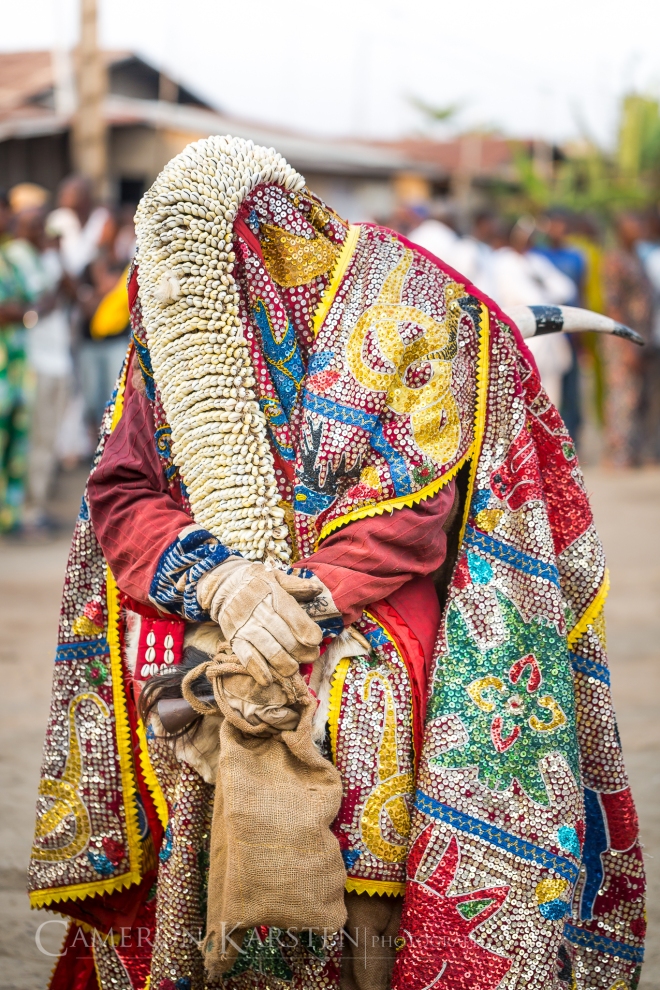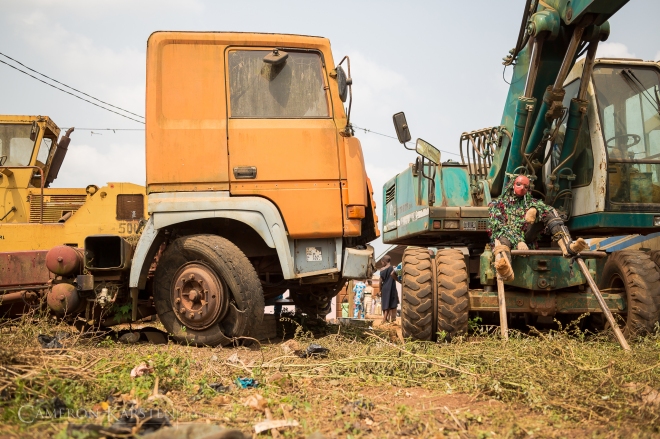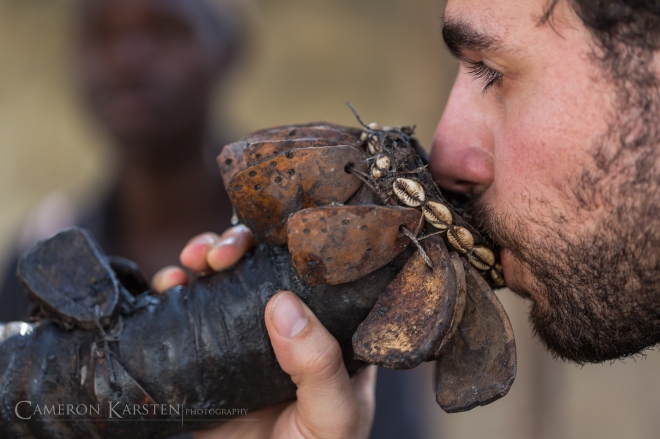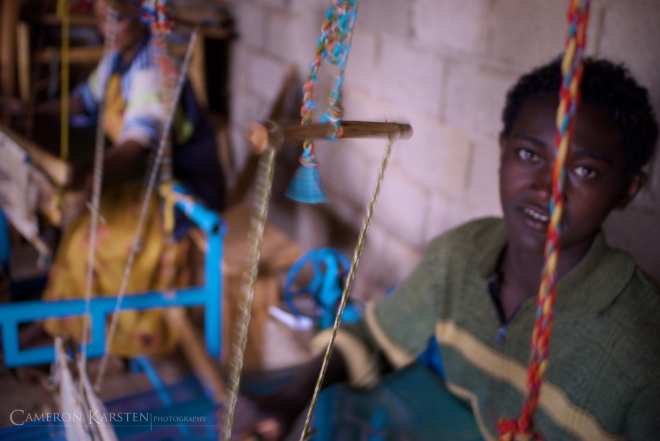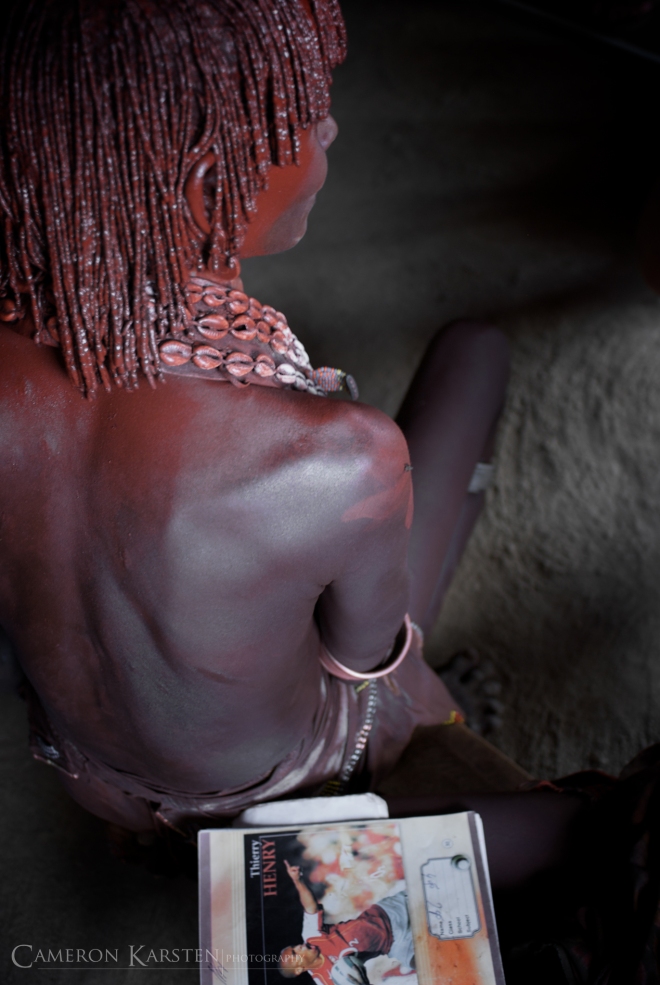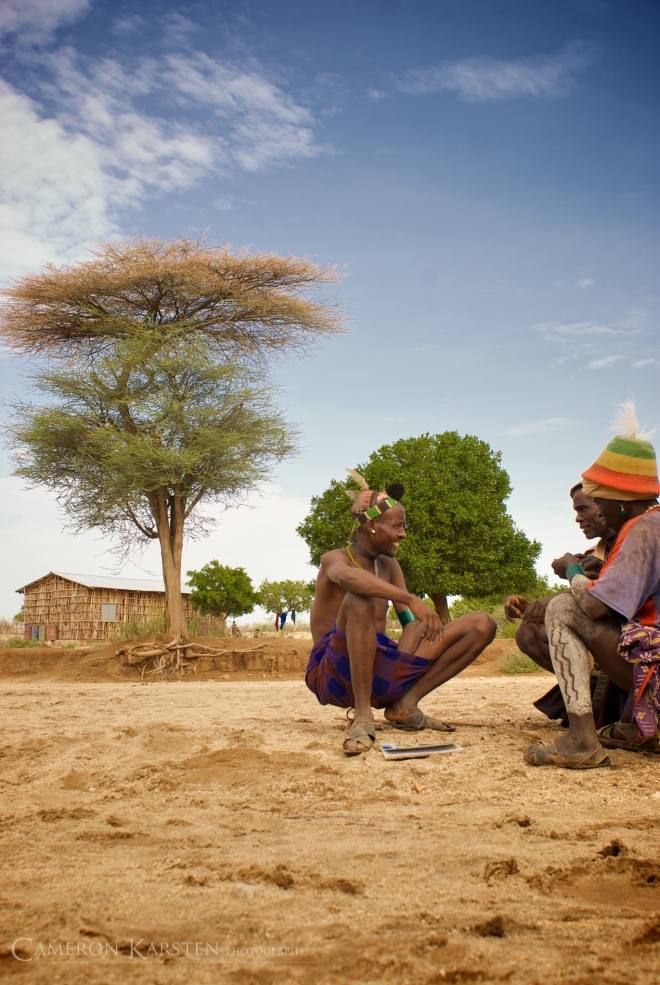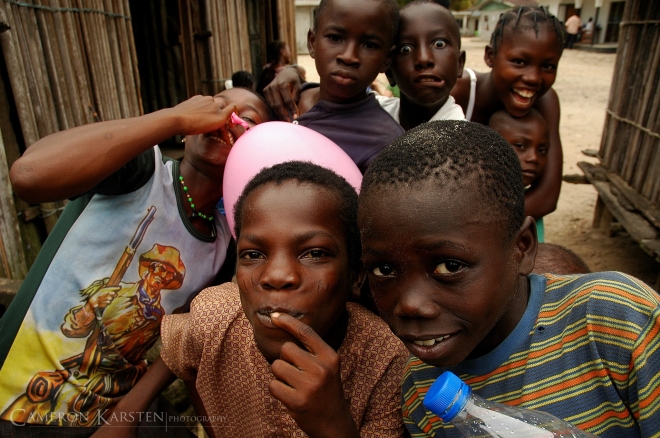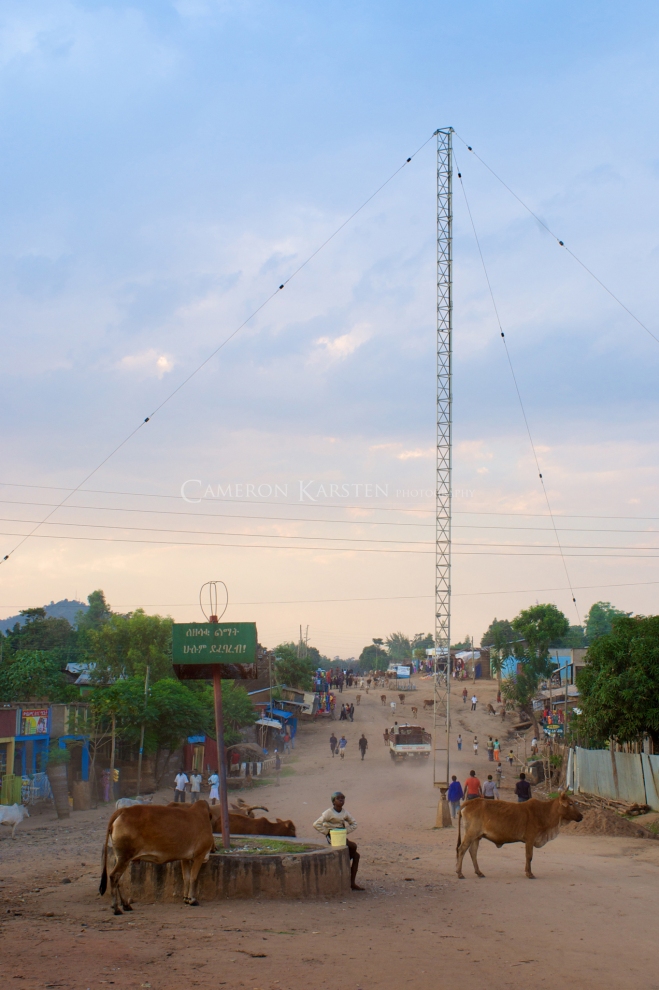Careening east we leave Togo and turn northward, passing into Central Benin. It is flat. I think Africa and I think extremes. Something like Vodou, yes. Extreme. And now when I think Central Benin, heading north just off the coastline, I picture extreme flatness. The roads are straight as an arrow, gray asphalt that moves with the sun’s curvature. Arid dirt lines the peripheral with scrubland leading into an empty horizon. Towns come and go, stopping points for megalithic lorry trucks that bump along the three-day journey into Burkina-Faso and Niger, names in and of themselves that feel extreme. Andretti, or Geoffrey, is a fast driver. He’s our driver, and he’s safe. But going through Central Benin to Abomey feels like forever.
Abomey is the central focal point for power, the power that once was called the great Kingdom of Dahomey. It was a royal city and it was feared by its neighbors (remember the first King of Ganvie? He turned into a stork and fled across waters he was so afraid). It was feared by the colonial powers and nearly defeated the French in the year 1892. It was feared by its own people, traitors who were captured, pushed off its towering walls and sacrificed to the gods. And it is here that Bruce Chatwin’s character Francisco Manoel de Silva in The Viceroy of Ouidah, the beguiled Brazilian slave trader, was sent to as a prisoner, only to escape with the King’s mad half-brother:
The palace of Abomey had tall walls made of mud and blood but very few doors. It lay at a distance of twenty-three thousand, five hundred and two bamboo poles from the beach. In its innermost compound lived the King, his eunuchs and three thousand armed women.
It is here where the walls are made from the blood of enemies, where the King had the pleasure of sitting on a throne of skulls, as well as choosing from a harem of 40+ women for an evening’s lover. It is here where protection came in the form of those three thousand armed women, the world’s only true knowledge of the existence of the famed Amazonian women warriors; bare-chested females who hacked off heads and bit their foe with razor sharp teeth filed to points. Extreme.
It was dark by the time we reached Abomey, dark just as the night da Silva walked the length of those many bamboo poles into the Kingdom of Dahomey. To foreigners the Kingdom itself could not even be pronounced. The French misspoke it, the culture’s native tongue Danhomé, which in Fon means in the belly of Dan. This is the name of the great Vodou snake god—bringer of life and fertility, the symbolism of eternal recycling. But today it has erased that meaning, succumbing to the French woes, contrived to an erred Dahomey.
We got our room and sat down for dinner. A man arrived. Menus? Instead he asked if we wanted to see a Vodou ceremony. Right now? Yes. We had to go now. We all looked at each other. He was serious. We were serious. This was our moment with Dan, the master of a fertile project— Danhomé reconciled! Let’s go.
The man flagged three motorbikes once we were out on the dark dusty roads. In Abomey, there are few streetlights and those that worked are as yellow as a melted crayon mixing with its close orange counterpart. The tungsten stain is eerie in the damp heat of inner Africa, with no breeze but passing transportation. Once on the back of our motorbikes, we sped off down foreign roads and eventually arrived at an alleyway. We got off, paid for our fare and our escort’s. There was no music. Hardly any people. we knew we were thinking the same thing: Shit. What have we done.
Follow me, he said. So we did like puny submissive sheep leaving the tungsten night to follow our shepherd into the shadows of a narrow alley. There was dust beneath our feet, fine red African dirt that would easily soak up the blood spilled from our dying bodies. He was just looking for another human sacrifice: The blood of two foreigners! Abomey’s new theme among the throngs of Vodou tourists.
The man who led us here was in front and he kept waving us onward as my fists clenched tighter with each twisting corner. I felt like the walls were closing in, my backpack of camera gear tightening on my chest with each heavy breath. Then there was music. Tam tams drumming. People singing. An air of excitement reaching our thriving bodies. The yellow-orange glow began to return. Suddenly from the darkness we rounded another corner and stepped into the thrill of a local Vodou ceremony.
It took minutes that felt like hours to negotiate with the head priest. Meanwhile we were standing by in a thick crowd of black skin. Everyone was pushing together, inching closer to see the performers in trance, taking on the likeness of their gods. They spun in gallant costumes, led by the auditory energy of the drummers who sat under a dim light beneath an expansive green tree. People sat on the dirt, dignitaries in plastic chairs and locals up on the walls and roofs of the surrounding housing. I loosened my fists. Relaxed my shoulders and let out an air of tense breath. I felt my whole body relax into this sacred space of Vodou, a space that we have submersed ourselves in for close to two weeks. We were documenting, exploring and inevitably becoming a part of this culture, a practice that supersedes any other form of religion since the dawning of humanity. 24/7 we were breathing Vodou and spinning its threads within our minds.
For the next two hours we secured the trust and permission of the people to photograph their local ceremony. Two white photographers with their cameras and lenses and one flash each. We crouched near the Vodou practitioners, studying their movements, watching their feet kick up the red earth and stamp back down to the timing of the many drum beats. We stared and felt that process when an outsider slowly melds into the inner circle. It was impossible not to become a part of the discovery.
As photojournalists and writers, we strive every second to learn more about our subject. Knowledge is the avenue to the complete intimacy of exposure. When the project was first proposed—Hey, how about Vodou?—we knew very little if anything. Pins, needles and a doll? No thanks Hollywood. This goes beyond the misnomer of one of the world’s most unidentified cultures that holds its complex belief system in absolute secrecy. But as the modern age reveals itself and as the lucrative endeavors within the tourism industry help provide for individuals, families and their country, Benin in particular has opened its doors just slightly, allowing those willing enough to go the distance, entrance into a place of origin where signs of evolution are omnipresent.
The ceremony ends. Our guide, the man who led us to this remote part of Abomey, where the magic history of Vodou and the powers of a royal city in the likes of Timbuktu and Zanzibar dominate, took us away. We were back at our hotel, a sweet little spot called Chez Monique. It was late. The kitchen was asleep as a group of large women lounged next to a blaring television, only paying attention during fits of sleeplessness—a strange scene with the romantic French tongue licking at the shadowed night. A blue cast flickered into these thick crevasses. We sat down. Our food was still warm; a plate of couscous with half a chicken and half a rabbit. The night governed and that feeling permeated deeper: The traveler in a far land with the ebbs and flows of successes, not judged by good or bad, but merely by the feeling of excitement and the fluctuations of extremes, traveling from one end to the next and back again. A life of the unknown. This is Vodou land, beyond pins and needles.

